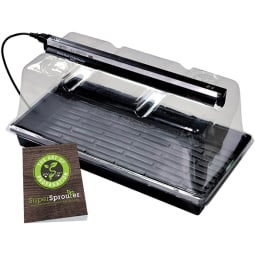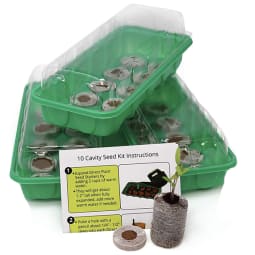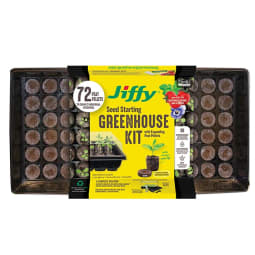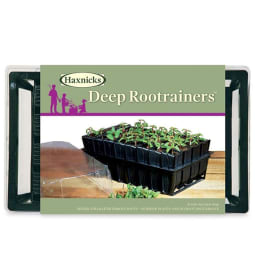The process by which a seed sprouts into a little baby plant is called germination. In order to break through its seed coat and successfully germinate, a plant needs plenty of light, oxygen, moisture, and heat—and that’s exactly what these kits are designed to deliver. While you can go the au naturel route and grow seeds outdoors from the start, indoor kits give you more control over the germination process and make it so that you don’t have to worry about pests, extreme temperatures, or storms ruining your harvest before it’s even gotten started. Ultimately, they increase the likelihood that your seeds will grow to become full-grown plants one day. Simply water the peat discs, pop on the cover, keep your seeds damp, and with any luck, you’ll have up to 72 germinated plants on your hands by spring. “The pots provide the plants ample room to establish strong root systems,” Ashlie Thomas, a North Carolina–based organic grower, raves of this affordable kit. “When it comes time to plant, you will need to cut the bottom of the mesh that holds the growing medium together to provide more root development space,” adds Kevin Espiritu, the founder of Epic Gardening, “but they’re very effective.” Jasmine Jefferson, the founder of Black Girls With Gardens, adds that they also “allow the plant roots to get an ample amount of air and create healthy root systems,” compared to plastic pots that can restrict roots. This kit comes with soil, but you’ll need to provide a water tray and cover yourself. (A clear plastic bag would work well!) Read your seed packet: Jefferson says it’s essential not to skip this initial step since the seed’s instructions will tell you “how many seeds to plant, how far apart to plant each seed, how deep, and when to plant your seeds,” she tells mbg. “There is typically a plethora of information on your seed packet that will help you avoid tons of seed starting mistakes.” Label everything: This is another simple step that really shouldn’t be skipped: “Not completing this task can cause a lot of issues, for obvious reasons,” says Jefferson. “I like to use wooden Popsicle sticks to mark my seedlings.” Don’t overwater: Once they’re in soil, you’ll want to water your seeds consistently to promote growth but also be careful not to overwater. “This will help you avoid the occurrence of diseases, root damage, and stunted growth,” says Thomas. Master gardener and author of Gardening Hacks Jon VanZile adds that those who are using peat soil should use an extra-light touch, as this material can hold a lot of water. He recommends always watering from the bottom instead of the top to further avoid overwatering. Use nutrient-rich potting soil: Starting your plants in the right soil is key: If your kit doesn’t come with pellets, use an organic seed starting mix. Once you start to see small leaves, Thomas says you’ll also want to give your seedlings a low dose of balanced fertilizer (equal amounts of nitrogen, phosphorus, and potassium). Adjust for temperature and humidity: Once you see that first bit of sprouting, Kostovick says you’ll also want to remove or adjust your kit’s cover to reduce the humidity. “Also, just as some seeds need warmth to germinate, others need cold before they’ll sprout,” she adds, giving poppies, oregano, catmint leeks, and many wildflowers as examples. “It’s best to not use a heating mat when starting those specific seeds.”













